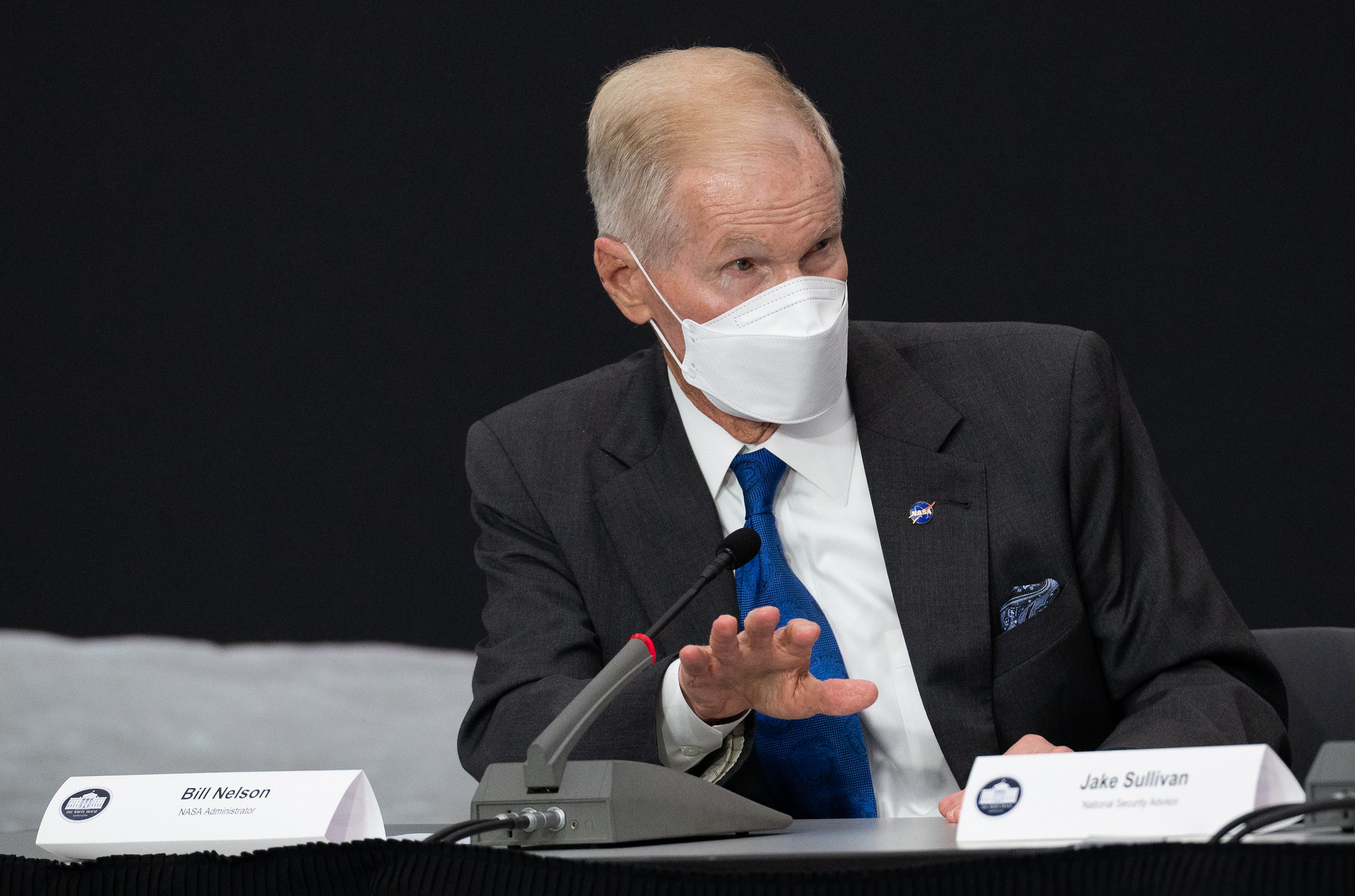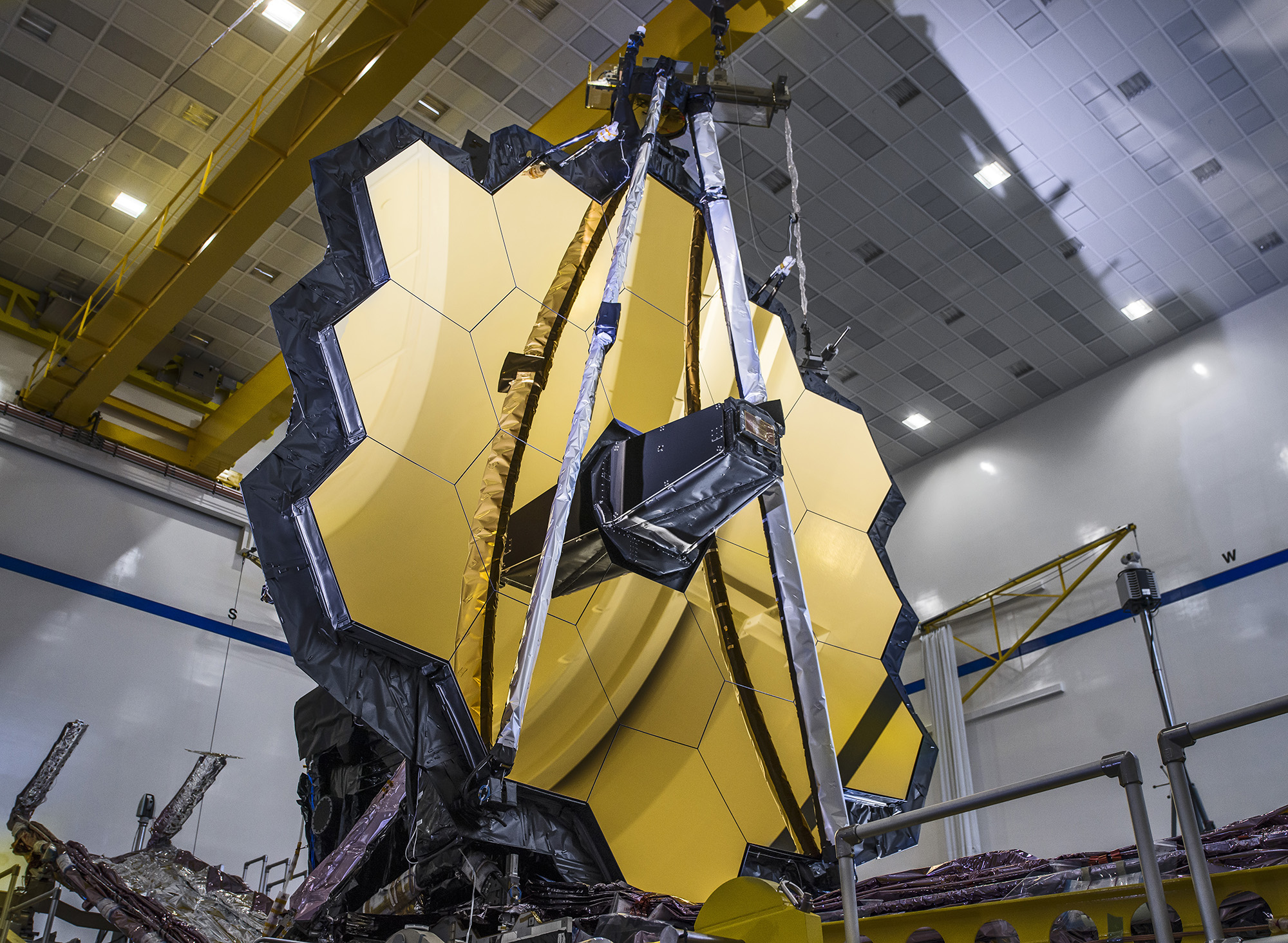The James Webb Space Telescope will open up the 'secrets of the universe,' NASA administrator says

NASA Administrator Bill Nelson is excited to see the James Webb Space Telescope open up the "secrets of the universe," he told Space.com.
"This is a one of a kind," Nelson said about the James Webb Space Telescope, which is set to launch this Saturday (Dec. 25) at 7:20 a.m. EDT (1220 GMT) from the Guiana Space Center in Kourou, French Guiana. "It is the most advanced technology," he said, adding that Webb, if successful, will "open up secrets of the universe that will be just stupendous, if not almost overwhelming."
As Nelson described, Webb will enable a "quantum leap of understanding of who we are, how we got here, what we are and how did it all evolve."
Related: How the James Webb Space Telescope works in pictures
Live Updates: NASA's James Webb Space Telescope launch
Webb observes in primarily infrared light. With the help of its extra-large mirror, which is six times bigger than the mirror on the Hubble Space Telescope, Webb will be able to detect infrared light from extremely faint, distant stars and galaxies. This will allow it to essentially look back in time to some of the earliest light in the observable universe.
"[Webb is] going to look through a keyhole in the sky," Nelson said. "In one case, it's going to peer back over 13 billion years to capture infrared light from light emitted at the formation of the very first galaxy about 250 million years after the Big Bang, which was 13 and a half billion years ago."
Nelson also described Webb's ability to identify and study alien planets transiting, or passing in front of their host stars. In addition to detecting exoplanets, Webb is "going to be able to determine what is the chemical composition in an atmosphere of that planet," Nelson said. "We're going to start to be able to determine, are there habitable atmospheres like our own revolving orbiting around other suns? That's going to be pretty exciting to find that out."
Breaking space news, the latest updates on rocket launches, skywatching events and more!
Webb's science itinerary has four main areas of focus: the first light in the universe, the birth of stars and planets, how and when the universe's first galaxies assembled and the study of exoplanets and their atmospheres. These main areas are just a jumping-off point; Webb's ambitious science plans include the search for life outside of Earth and the study of dark matter and dark energy.

Feeling proud
Aside from his excitement for Webb's next-generation capabilities, Nelson is also feeling "very proud" of the teams that brought it to life.
"I am very proud of the NASA workforce and what they've done," Nelson told Space.com. Webb is a mission over 25 years in the making, with development on the scope beginning in 1996, and some mission team members have spent their entire careers working to create Webb and get it ready to launch.
Nelson added that he's also "very proud of our collaboration," as Webb is an international effort between NASA, the European Space Agency and the Canadian Space Agency.
"This is going to be a great day, not only for America, but for our international partners," Nelson said about Webb and its upcoming launch date. "The beneficiaries are going to be all the people of planet Earth, to have a better understanding."
Email Chelsea Gohd at cgohd@space.com or follow her on Twitter @chelsea_gohd. Follow us on Twitter @Spacedotcom and on Facebook.

Chelsea “Foxanne” Gohd joined Space.com in 2018 and is now a Senior Writer, writing about everything from climate change to planetary science and human spaceflight in both articles and on-camera in videos. With a degree in Public Health and biological sciences, Chelsea has written and worked for institutions including the American Museum of Natural History, Scientific American, Discover Magazine Blog, Astronomy Magazine and Live Science. When not writing, editing or filming something space-y, Chelsea "Foxanne" Gohd is writing music and performing as Foxanne, even launching a song to space in 2021 with Inspiration4. You can follow her on Twitter @chelsea_gohd and @foxannemusic.
